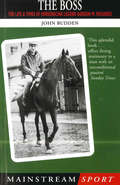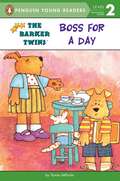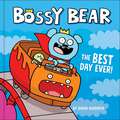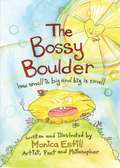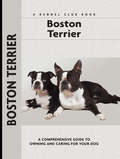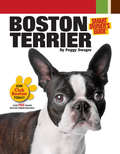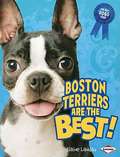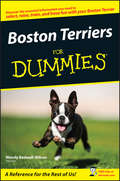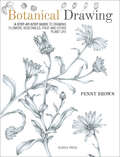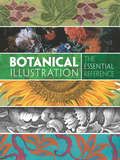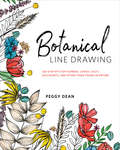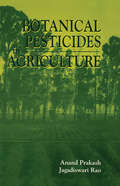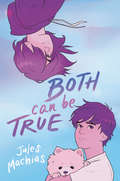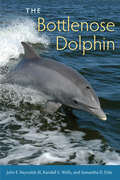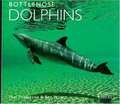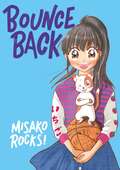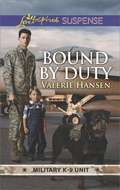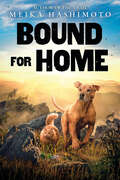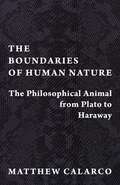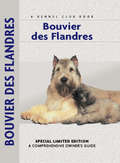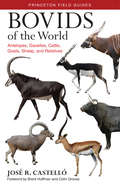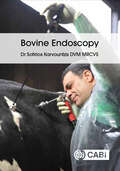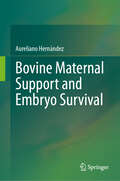- Table View
- List View
The Boss: The Life and Times of Horseracing Legend Gordon W. Richards
by John BuddenThe sudden death of Gordon W. Richards in late September 1998 brought a premature end to a legendary training career which had seen him rise from obscurity to national fame as master of his profession. Consigned to racing's scrap-heap with a broken back at the age of 29, he scraped a living as a livery stable proprietor and horse-dealer in a remote part of Northumberland until, five years later, he `discovered' Playlord and a new dawn broke. Rugged, demanding, often outspoken, sometimes ruthless but never lacking in humour, Gordon made relentless progress through the training ranks. `The Boss', as he was widely known, liked to run his stable his own way. Horses, not humans, headed the pecking order, as many famous riders and owners discovered to their cost. Few escaped unscathed, but in over 30 years he employed only six stable jockeys, and two of these, Ron Barry and Jonjo O'Neill, gained championship honours. The Boss charts the successes of the man who twice saddled more than a hundred winners in a single season and who scooped the pool in the Aintree Grand National on two occasions. This enthralling biography, written with full co-operation of Richards himself, provides a compelling insight into the forces that drove him to become one of the most respected trainers in the world.
Boss for a Day (The Barker Twins)
by Tomie dePaolaMoffie is ten minutes older than Morgie and she likes to control every situation. It's time for Moffie to let her twin brother be Boss for a Day, but first she'll have to show him how.
Boss Is Hungry (Into Reading, Level J #7)
by Debbie Croft Natalie HinrichsonNIMAC-sourced textbook <p><p> Boss the dog is hungry, so the boy gets the dog food, the water and the bone ready for Boss. After he has eaten, Boss is ready for playtime.
Bossy Bear: The Best Day Ever! (Bossy Bear)
by David HorvathBossy, Turtle, and their friends are about to have the best day ever! Or are they? When Bossy, an overly enthusiastic extrovert, and Turtle, a thoughtful introvert, are together, anything is possible!Inspired by Children's Day traditions in Korea, Bossy wants to make sure his friends have the best time. But to do so, he has to be . . . bossy. The best day ever needs to have the best lunch ever-fried chicken, Bossy's favorite-followed by the best movie ever and the best roller coaster ever. But his friends Turtle, Roller, Bissy, Crocadoca, and Choco have their own preferences.Will Bossy reach "peak bossiness" and ruin Children's Day? Can these friends reach a compromise?Bossy Bear and Turtle, stars of the top-rated Nickelodeon show, are now starring in a series of brand new books from David Horvath, cocreator of Uglydoll plush!
The Bossy Boulder: How Small Is Big and Big Is Small
by Monica EstillThe Bossy Boulder is on top of the world when Time and Change push him off his high place. His world crumbles and his is broken. Again and again he falls and breaks. He goes through the stages of grief and as he gets smaller he comes to acceptance. Soon he is sand among sand; no bigger no smaller--only then does he realize that he is one with the mountain.
Boston Terrier
by Alma BettencourtThe experts at Kennel Club Books presents the world's largest series of breed-specific canine care books. Each critically acclaimed Comprehensive Owner's Guide covers everything from breed standards to behavior, from training to health and nutrition. With nearly 200 titles in print, this series is sure to please the fancier of even the rarest breed.
Boston Terrier
by Peggy SwagerDedicated to the "American gentleman" of dogs, one of the most pleasant and entertaining companion dogs in the world, the Boston Terrier, this Smart Owner's Guide, created by the editors at Dog Fancy magazine, offers the most up-to-date and accurate information every dog owner needs to become a well-informed caregiver for his dog. Illustrated with color photographs of adorable puppies and handsome adults, this easy-to-read primer is designed in a modern, lively manner that readers will find user-friendly and entertaining.Each Smart Owner's Guide offers a description of the breed's character and physical conformation, historical overview, and its attributes as a companion dog. The reader will find informative chapters on everything he or she needs to know about acquiring, raising, and training this remarkable purebred dog, including: finding a breeder and selecting a healthy, sound puppy; preparing for the puppy's homecoming, shopping for supplies, and puppy-proofing the home; house-training; veterinary and home health maintenance; feeding and nutrition; and grooming. Obedience training for basic cues (sit, stay, heel, come, etc.) and solving potential problem behaviors (barking, chewing, aggression, jumping up, etc.) are addressed in separate chapters, as are activities to enjoy with the dog, including showing, agility, therapy work, and more.Entertaining tidbits and smart advice fill up colorful sidebars in every chapter, which the editors call "It's a Fact," "Smart Tip," "Notable & Quotable," and "Did You Know?" Real-life heroes and rescue stories are retold in full-page features called "Pop Pups" and "True Tails." Recipes, training, and care tips are highlighted in the "Try This" feature pages.The Smart Owner's Guide series is the only series that offers readers an online component in which dog owners can join a breed-specific online club hosted by dogchannel.com. At Club Boston, owners of the breed can find forums, blogs, and profiles to connect with other breed owners, as well as charts and checklists that can be downloaded. More than just 20,000 pages of solid information, there's a host of fun to be had at the club in the form of downloadable breed-specific e-cards, screensavers, games, and quizzes.The Resources section of the book includes contact information for breed-related organizations and rescues, as well as practical guidance on traveling with dogs, identification, and locating qualified professionals to assist the dog owner, such as pet sitters, trainers, and boarding facilities. This information-packed Smart Owner's Guide is fully indexed.
Boston Terriers Are the Best! (The Best Dogs Ever)
by Elaine LandauWhat's that dog with the perky ears, big eyes, and lively personality? It's the Boston terrier! Boston terriers are "people pooches" with playful spirits and keen intelligence. Their owners think they are the best dogs ever--and it's easy to see why. If you're a Boston terrier fan, you'll want to learn all about this breed, from its smooth coat and sturdy body to its history as a Fighting dog in Boston, Massachusetts. You'll also want to find out how to care for the Boston terrier. So check out this go-to guide for Boston terrier lovers--and learn all about why Boston terriers are the best breed there is! Picture descriptions and captions included.
Boston Terriers For Dummies
by Wendy Bedwell-WilsonHas a Boston Terrier stolen your heart? Whether you're thinking about adding one of these "American Gentlemen" to your home or you already have one, this fun, friendly guide is the key to becoming a responsible and happy puppy parent!Boston Terriers For Dummies gives you all the basics on raising and living with this intelligent, affectionate breed. You'll learn where and how this dog originated, what it needs, and how to determine if a Boston Terrier is the right dog for you and your family. From feeding and grooming to basic training, you get all the tips any Boston owner needs to make their dog feel welcome, loved, and well-cared for. You'll discover how to:Understand the breed's origin and historyChoose the right Boston Terrier for youPuppy-proof your home and yardTeach your Boston basic commandsHousetrain and socialize your puppyCorrect Boston behavior gone badHandle breed-specific health concernsEnhance your dog's quality of lifeTravel with your Boston--or find a reputable sitterCare for the senior dogComplete with sections on nutrition, first aid, and exercise and play, Boston Terriers For Dummies is the only guide you need to raise a happy, healthy dog!
Botanical Drawing: A Step-By-Step Guide to Drawing Flowers, Vegetables, Fruit and Other Plant Life
by Penny BrownThe definitive artist's guide to drawing detailed and accurate plants, flowers and other vegetation in pencil—including illustrations and exercises.Botanical Drawing provides a thorough and expert guide to the subject, touching on the history of this fascinating art form as well as its rules and practicalities. Artist Penny Brown explains the materials, learnings and techniques required to produce accurate botanical illustrations. She also includes an accessible, basic study of botany for the absolute beginner.By following Brown’s step-by-step instructions, close studies and explorations of the subjects, you will be able to produce your own illustrations of plants, flowers, vegetables and their myriad parts. Botanical Drawing offers knowledge, techniques, and inspiration as you create your own projects.
Botanical Illustration: The Essential Reference
by Carol Belanger GraftonComprising more than 500 years of printed botanical illustrations, this stunning compendium of black-and-white and color images begins with medieval illuminated manuscripts and woodcuts from the early days of printing. In addition to images from the fifteenth and sixteenth centuries, the collection features highlights from such seventeenth-century classics as Gerard's Herbal, Besler's Hortus Eystettensis, and Crispin van de Pass' Hortus Floridus. Latter-day selections include illustrations from major nineteenth-century works -- including the great flower prints of Pierre-Joseph Redouté and hand-colored lithographs by many other artists of the period -- as well as the imaginative twentieth-century floral work in the Art Nouveau style of M. P. Verneuil, E. A. Seguy, and others.Detailed bibliographical information concerning every source and biographical information on the artists make this volume a vital reference tool as well as a splendid resource of significant and beautiful botanical illustrations. Students of graphic art and illustration as well as graphic designers, advertising professionals, and horticulturalists will prize this treasury of material from many rare historic sources.
Botanical Line Drawing: 200 Step-by-Step Flowers, Leaves, Cacti, Succulents, and Other Items Found in Nature
by Peggy DeanFrom the artist behind the popular Pigeon Letters website, an easy, no-skills-necessary guide to drawing flowers, leaves, and cacti with 200 step-by-step prompts.Line drawing is an easy-to-master art form featuring illustrative, doodle-like designs. It's used widely among artists of many types with both fine and bold lines, creating different variations. Botanical Line Drawing teaches you how to start with the simplest doodles, building into more elaborate, delicate illustrations. This book focuses on the extremely popular subject matter of the natural world and includes flowers, leaves, succulents, houseplants, trees, branches, mushrooms, and more. These simple line drawings will allow you to branch out and have fun with your own personal style, as well as inspire you to add flourishes to other projects.
Botanical Pesticides in Agriculture
by Anand Prakash Jagadiswari RaoDue to the prohibitive cost of synthetic pesticides and the problems of environmental pollution caused by continuous use of these chemicals, there is a renewed interest in the use of botanicals for crop protection. Agricultural entomologists, nematologists, and pathologists the world over are now actively engaged in research into the use of plants to fight agricultural pests and diseases, and to reduce the losses caused by them. Botanical Pesticides in Agriculture reviews the research on botanical pesticides used to combat losses due to pests of agricultural importance, with special attention focused on the use of higher plants. This book will serve as the baseline reference work for future research, and many of the botanicals discussed, such as neem, bael, begonia, pyrethrum, tobacco, karanj, and mahuwa, may become integral parts of pest control programs currently being developed. It is believed that botanical pesticides will minimize the undesirable side effects of synthetic pesticides and help preserve the environment for future generations.
Both Can Be True
by Jules MachiasDebut author Jules Machias explores identity, gender fluidity, and the power of friendship and acceptance in this dual-narrative Own Voices story about two kids who join forces to save a dog . . . but wind up saving each other.Ash is no stranger to feeling like an outcast. For someone who cycles through genders, it’s a daily struggle to feel in control of how people perceive you. Some days Ash is undoubtedly girl, but other times, 100 percent guy. Daniel lacks control too—of his emotions. He’s been told he’s overly sensitive more times than he can count. He can’t help the way he is, and he sure wishes someone would accept him for it.So when Daniel’s big heart leads him to rescue a dog that’s about to be euthanized, he’s relieved to find Ash willing to help. The two bond over their four-legged secret. When they start catching feelings for each other, however, things go from cute to complicated. Daniel thinks Ash is all girl . . . what happens when he finds out there’s more to Ash’s story?With so much on the line—truth, identity, acceptance, and the life of an adorable pup named Chewbarka—will Ash and Daniel forever feel at war with themselves because they don’t fit into the world’s binaries? Or will their friendship help them embrace the beauty of living in between?
The Bottlenose Dolphin: Biology and Conservation
by John E. Reynolds III Randall S. Wells Samantha D. EideThe Bottlenose Dolphin presents for the first time a comprehensive, colorfully illustrated, and concise overview of a species that has fascinated humans for at least 3,000 years.After reviewing historical myths and legends of the dolphin back to the ancient Greeks and discussing current human attitudes and interactions, the author replaces myths with facts--up-to-date scientific assessment of dolphin evolution, behavior, ecology, morphology, reproduction, and genetics--while also tackling the difficult issues of dolphin conservation and management.Although comprehensive enough to be of great value to professionals, educators, and students, the book is written in a manner that all dolphin lovers will enjoy. Randall Wells’s anecdotes interspersed throughout the work offer a first-hand view of dolphin encounters and research based on three decades working with them. Color photographs and nearly 100 black and white illustrations, including many by National Geographic photographer Flip Nicklin, beautifully enhance the text.
Bottlenose Dolphins (WorldLife Library)
by Paul Thompson Ben WilsonIntelligent, graceful and approachable, dolphins have long been among the worlds favorite sea creatures. Of all the dolphin species, the bottlenose is best known and loved. But bottlenose dolphins are more than television stars and aquarium performers. In Bottlenose Dolphins readers will voyage under the sea with researchers Paul Thompson and Ben Wilson, who are studying dolphins off the coast of Scotland. The authors explain the bottlenose dolphins oceanic habitat and range, and delve into their complex social relationships. They also share their concerns for the future of these beloved seafarers and suggest steps to protect them. Stunning color photographs accompany their insights.
Botulinum Toxin Treatment in Surgery, Dentistry, and Veterinary Medicine
by Bahman JabbariAll books on the market which have been written on the subject of botulinum toxin therapy focus on treatment of hyperactive movement disorders, autonomic dysfunction (bladder, sweat and salivary glands) and some pain indications (migraine). Reference to pre-or post -surgical indications are brief and often out-dated. No book has information on dentistry or veterinary medicine. This book provides up-to-date information on botulinum toxin therapy in surgical fields. It is also the only book in the market that provides information on botulinum toxin therapy in dentistry and veterinary medicine, furnishing the latest information. Botulinum Toxin Treatment in Surgery, Dentistry, and Veterinary Medicine appeals to many disciplines including surgery, dentistry and veterinary medicines well as appealing to neurologists and internists.
Bounce Back (Bounce Back #1)
by Misako Rocks!Lilico, with the help of her cat, must learn to adjust to a new country, a new school, and new pressures in Bounce Back, a middle grade graphic novel from author/illustrator Misako Rocks! about finding your team and finding yourself. Lilico’s life in Japan is going well. She has great friends and is the captain of the school's basketball team. She’s happy!Then comes her parents’ news: they’re moving to America! Before she knows it, Lilico finds herself in Brooklyn, New York, forced to start all over. And that won’t be easy with her closest friends thousands of miles away or a school bully who immediately dislikes her.Luckily, anime-loving Nala and Henry eventually befriend Lilico and with help from them—along with her guardian spirit who looks a lot like her cat, Nico—Lilico just might figure out where she fits in.This is age-appropriate, kid-friendly manga for kids - both elementary and middle school - that tells a story about friendship, new beginnings, and doing what you love, no matter what.
Bound by Duty: Bound By Duty Rodeo Standoff Dying To Remember (Military K-9 Unit)
by Valerie HansenAssignment: Single Mom SurveillanceThe Military K-9 Unit series continuesHer serial killer brother’s escaped—and it’s single mom Zoe Sullivan who’s under suspicion! Sgt. Linc Colson trusts two things: his instincts and his Rottweiler K-9 partner, Star—and certainly not the pretty face he’s assigned to monitor. He’s done everything to keep her from getting under his skin—now he must stop those who want to put her six feet under.
Bound For Home
by Meika HashimotoFrom the author of The Trail, a heartwarming tale of survival and adventure, following three unlikely friends and their quest to make it home together.Max: a shelter dog who just wants his freedom.Emi: a lonely girl who secretly wants a place to call home.And Red: a cat who's never needed anyone or anything beyond her own sharp wits.Can the three survive a journey deep into the woods?From the moment Emi walks into the animal shelter, she knows the dopey-looking dog with the sandy-colored hair is the dog for her. Despite Max's many escape attempts and inability to be trained, she chooses him.When Emi's home life starts to crumble, she takes off into the Maine woods with Max at her side, determined to prove that she can make it on her own. But they immediately lose each other, and one catastrophe after another shows that they're totally unprepared to handle the wilderness. Wild animals, hunger, and an impossible trail to track mean that each must do whatever it takes to stay alive—but what happens when they have to choose between getting back to safety... and looking out for a friend? Can loyalty be as strong as the will to survive?
The Boundaries of Human Nature: The Philosophical Animal from Plato to Haraway
by Matthew CalarcoAre animals capable of wonder? Can they be said to possess language and reason? What can animals teach us about how to live well? How can they help us to see the limitations of human civilization? Is it possible to draw firm distinctions between humans and animals? And how might asking and answering questions like these lead us to rethink human-animal relations in an age of catastrophic ecological destruction?In this accessible and engaging book, Matthew Calarco explores key issues in the philosophy of animals and their significance for our contemporary world. He leads readers on a spirited tour of historical and contemporary philosophy, ranging from Plato to Donna Haraway and from the Cynics to the Jains. Calarco unearths surprising insights about animals from a number of philosophers while also underscoring ways in which the philosophical tradition has failed to challenge the dogma of human-centeredness. Along the way, he indicates how mainstream Western philosophy is both complemented and challenged by non-Western traditions and noncanonical theories about animals. Throughout, Calarco uses examples from contemporary culture to illustrate how philosophical theories about animals are deeply relevant to our lives today. The Boundaries of Human Nature shows readers why philosophy can help transform not just the way we think about animals but also how we interact with them.
Bouvier Des Flandres
by Robert Pollet Carol Ann JohnsonThis Comprehensive Owner's Guide to the Bouvier des Flandres serves as a complete introduction to multi-talented working dog that hails from Belgium. Written by Dr. Robert Pollet, a highly regarded expert on the Belgian breeds and an international judge, this volume paints a detailed portrait of the Bouvier's history in Europe, showing how this hard-working farm and cow dog developed into the rough and gruff purebred dog we know today. The book continues with a chapter on characteristics, encapsulating all of the virtues of this all-purpose herding and protection dog, offering sound advice about which owners are best suited to the breed.All owners will welcome the well-prepared chapter on finding a breeder and selecting a healthy, sound puppy. Chapters on puppy-proofing the home and yard, purchasing the right supplies for the puppy as well as house-training, feeding, and grooming are brimming with detail and illustrated with handsome adults and puppies. In all, there are over 135 photographs in this useful and reliable volume. The author's advice on obedience training will help readers better mold and train their independent-minded dogs into the most socialized, well-mannered good canine citizens. The extensive chapter on healthcare written by Dr. Lowell Ackerman provides accurate information on selecting a qualified veterinarian, vaccinations, parasites, infectious diseases, and more. The final chapter on showing the Borzoi will be of great interest to all owners wishing to explore the competitive world of dog sports. Sidebars throughout the text offer helpful hints, covering topics as diverse as vaccines, toxic plants, first aid, crate training, carsickness, fussy eaters, and more. Fully indexed.
Bovids of the World: Antelopes, Gazelles, Cattle, Goats, Sheep, and Relatives
by Colin Groves José R Castelló Brent HuffmanBovids are a diverse group of ruminant mammals that have hooves and unbranched hollow horns. Bovids of the World is the first comprehensive field guide to cover all 279 bovid species, including antelopes, gazelles, cattle, buffaloes, sheep, and goats. From the hartebeest of Africa and the takin of Asia to the muskox of North America, bovids are among the world's most spectacular animals and this stunningly illustrated and easy-to-use field guide is an ideal way to learn more about them. The guide covers all species and subspecies of bovids described to date. It features more than 300 superb full-color plates depicting every kind of bovid, as well as detailed facing-page species accounts that describe key identification features, horn morphology, distribution, subspeciation, habitat, and conservation status in the wild. This book also shows where to observe each species and includes helpful distribution maps.Suitable for anyone with an interest in natural history, Bovids of the World is a remarkable and attractive reference, showcasing the range and beauty of these important mammals.The first comprehensive field guide to all 279 bovid species337 full-color plates, with more than 1,500 photographs Detailed species accounts describe key identification features, distribution, subspeciation, habitat, behavior, reproduction, and conservation statusFully updated and revised taxonomy, with common and scientific namesEasy-to-read distribution maps
Bovine Endoscopy
by Dr Sotirios KarvountzisEndoscopic applications are recognised and well-established techniques in human surgery, where a variety of procedures are performed routinely. A less intrusive and labour demanding process than surgery, these procedures have great potential for use in veterinary medicine. They allow a quicker clinical recovery, minimal intrusion and risk of bacterial exposure, and a lower mortality than conventional surgical options. Beginning with an introduction to the topic and an overview of bovine anatomy, this book then discusses both mainstream and experimental applications of endoscopy in cattle. It covers: - Practical advice on preparing for the procedure and patient restraint; - Techniques including LDA corrections, RDA corrections, exploratory laparoscopy, exploratory thoracoscopy, theloscopy and umbilical hernia corrections; - Post-operative care to allow the animal to rejoin the herd at the next milking, whenever possible. Written in a practical and accessible style for veterinary practitioners and students, the book provides a thorough and complete introduction to the exciting new field of bovine endoscopy.
Bovine Maternal Support and Embryo Survival
by Aureliano HernándezIn this work, the endocrine and histological preparations of the uterine environment for embryo/foetus survival are covered, through compilation of relevant research results pertaining ovarian, uterine and placental changes. Also, a general overview of the ovarian cycle, uterine changes, development of the placenta, nutritional and immunological mechanisms of embryo acceptance and protection, as well as some of the most outstanding causes of embryo/foetus mortality. Each chapter involves a general discussion of relevant and pertinent research findings, including already accepted facts and those which open the possibility of new research directions. Synthesis of possible mechanisms of main biological phenomena are illustrated. More than 400 references were taken into account and herein presented, as well as photographs and illustrations.
